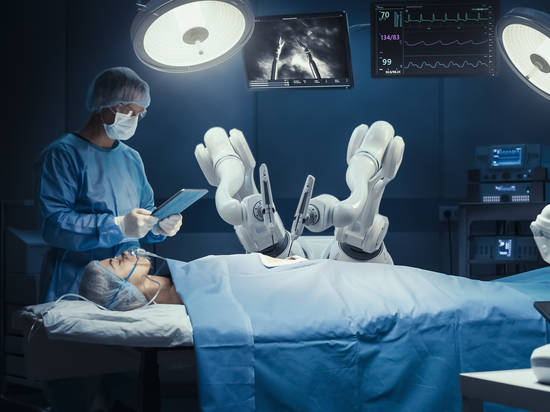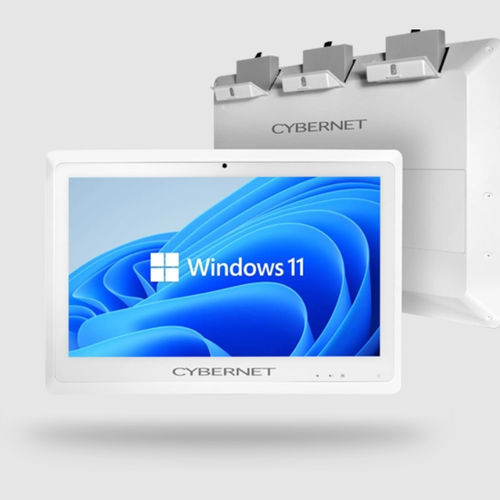
#Industry News
ESSENTIAL EMERGENCY ROOM EQUIPMENT
What surgeons absolutely need in the OR and why
Worldwide, over 300 million surgeries are performed each year, with US surgeons performing around 64 million procedures alone. Hospitals equip their surgical teams and operating theaters with the best possible tools and equipment to maximize each surgery's success. Today's article will review the most essential types of operating room equipment, including their purposes, uses, and benefits.
Core Operating Room Equipment
Operating rooms must have specific medical equipment to function correctly. These five are considered core equipment for ORs.
Surgical tables: Commonly referred to as operating tables. Surgical tables are crucial in providing stability and support for patients during surgical procedures. These tables are not one-size-fits-all; they are tailored to meet the specific requirements of various surgical specialties. For instance, general-purpose tables are versatile and can accommodate many procedures. In contrast, specialty-specific tables such as orthopedic and neurology tables are designed with unique features to cater to the specific needs of those surgical disciplines. Additionally, surgical table accessories, including arm supports, enable surgeons to carefully position and secure patients to maximize safety and facilitate optimal accessibility for the surgical team. This comprehensive setup ensures that patients can be arranged with precision, ultimately contributing to the successful execution of surgical procedures.
Surgical Lights: Surgical lights provide the necessary light to illuminate the operation site while eliminating shadows. Today, many older halogen lights used in ORs have been replaced by brighter, more energy-efficient LED options. These new surgical lights last longer, emit less heat, provide more accurate color rendition, and have better shadow control.
Anesthesia Machines: Anesthesia machines play a crucial role in medical procedures by carefully controlling a patient's state of unconsciousness. Also known as anesthesia workstations, anesthesia delivery systems, and anesthesia carts, these devices are essential for patient safety. They incorporate flow meters, vaporizers, ventilators, and pressure gauges to deliver the patient a precise combination of anesthetic gases and oxygen. Additionally, they are equipped with medical-grade monitors that continuously track the patient's vital signs. In case of any sudden issues or complications, hypoxic-mixture and oxygen failure alarms alert the medical team, allowing them to respond swiftly and effectively.
Electrosurgical Units (ESUs): ESUs or Bovie machines (named after its creator, William Bovie) allow surgeons to cut and cauterize tissue with electricity, which minimizes bleeding. Electrode pads ground the electricity traveling through the patient's body. Other modes allow more delicate work, like brain surgery.
Surgical Instruments: Rounding out the five core essential operating room equipment are the surgical instruments. They are the most important, as they allow the surgeons and their teams to perform procedures directly. At a minimum, the OR should stock:
Forceps to grip, hold, or move tissue and other objects during surgery
Hemostats to stop bleeding, especially from small blood arteries
Retractors to pull back cut tissue
Scalpels to make incisions
Suction devices to keep the surgical area clear of fluid during surgical procedures
Surgical clamps to keep cut tissue in place or to stop blood flow
Surgical needles and sutures for closing incisions and wounds
Surgical scissors to make precise cuts
Proper maintenance is crucial to ensure these high-quality surgical instruments' optimal performance and longevity. Thorough cleaning processes, such as autoclaving for sterilization, play a critical role in ensuring the safety of these instruments during medical procedures. Additionally, using specialized surgical instrument lubricants rather than saline solutions helps prevent potential corrosion that could compromise the integrity and effectiveness of the instruments over time.
Supporting Equipment
Supporting equipment consists of tools and devices that play vital, yet indirect, roles in surgical success. Here are four examples.
Surgical scrub sinks: Surgeons and their teams use these to scrub their arms and hands of pathogens, reducing the chance of transmitting healthcare-associated infections (HAIs) to patients.
Medical gas systems: These machines supply the patient with oxygen, nitrous oxide, and other gases. These systems also supply specific OR tools that run on compressed air. (The anesthesia machines above regulate the gasses being administered to the patient).
Storage and mobility solutions: Efficient storage aids the surgical team by providing quick access to their medical supplies and OR equipment (examples: surgical gowns, sponges, gauze pads, etc.). Storage units range from stainless steel cases and cabinets to surgical carts.
Nurses Station: This is the workspace in the surgical centers where nurses coordinate care for patients before and after their surgeries. Nurses often enter necessary documentation here, including updating patients' EHRs with surgical information.
Computers and Monitoring Systems
With the digital transformation of healthcare, computers have been integrated into essential operating room equipment lists and guides. For example, even core equipment such as the anesthesia machine now utilizes a medical box PC to manage and control vital functions effectively.
Other operating room functions where computers are included:
Medical-grade computers: Surgeons may bring up patients' electronic medical records (EMR) on their medical PC to review everything from medications to developing pre-op surgical plans. Surgical teams may track surgical equipment via their medical tablet's built-in barcode scanner to ensure nothing gets lost in the patient's body before closing.
Regardless of use, medical-grade computers built with features like 60601-1 certification for patient safety, fanless design, and IP65 sealed front bezel ensure the medical computer and tablets can function just fine in the sometimes unforgiving environment of the OR.
Surgical monitors: In surgical procedures, medical teams often work with intricate body parts that are either too small to be seen by the naked eye, like many veins, or extremely delicate, like the eye's cornea and the brain. Advanced technology and resources are crucial for specific surgical procedures, such as minimally invasive surgery.
High-definition and 3D monitors play a vital role in these operations, providing high resolutions and anti-glare filters that enable surgeons to visualize operation sites even under bright surgical lights. In addition, 4k medical computers and displays bring out fine details from X-rays and ultrasound scans, offering crucial information for surgeons during pre-op planning. This lets them view tumors and other masses beforehand, assisting in proper planning and preparation.
Integrated Operating Rooms: Integrated operating rooms, as part of the Internet of Medical Things (IoMT), involve the linkage of medical-grade computers, monitors, and medical devices, such as anesthesia machines, within a network.
The advantages of integrated operating rooms are significant. Surgeons can conduct minimally invasive surgeries using surgical-assistance robots, allowing them to operate solely through robotic limbs. Remote medical specialists can provide real-time guidance to on-site surgeons on specific surgical procedures, eliminating the need to physically bring the specialist to the operating room or transport the patient to them, thus saving time and reducing costs. Additionally, having fewer personnel in the operating room lowers the risk of surgical site infections in each scenario.
Let Cybernet Fulfill Your OR Computer Shopping Needs
Operating rooms should be equipped with the industry's best medical computers to perform seamless surgeries.
Contact a staff member at Cybernet Manufacturing to fulfill your OR's computer needs. Our All-In-One PCs, box PCs, and tablets are built from the ground up to be effective in demanding environments like the OR. As an Original Design Manufacturer, we can customize our specialized computers to your needs.






